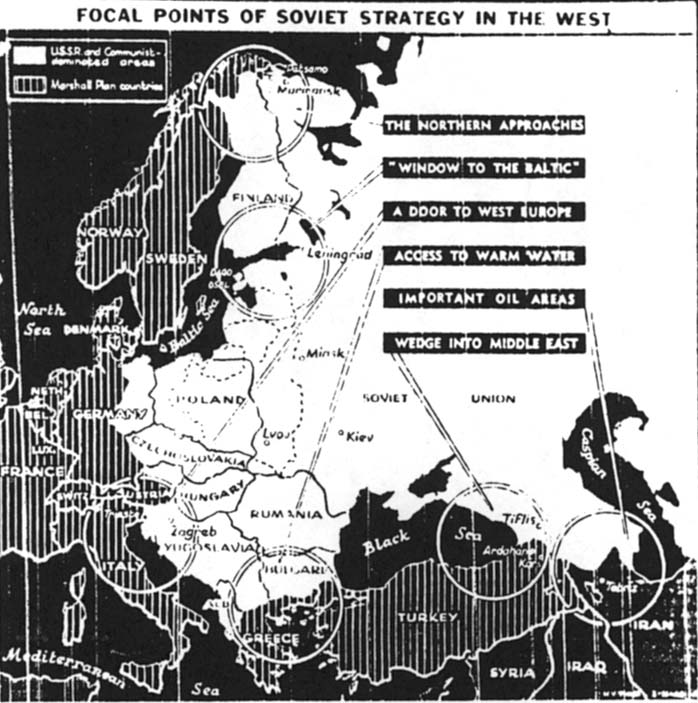 When Leonid Brezhnev praised Hungarian agriculture at the Soviet Party Congress in 1981, Hungarian farmers complained that so many delegations from the Soviet Union descended on them they could not collect their harvest. Though the Hungarians were supposed to be flattered by Brezhnev’s attention, they could not stomach the primitive peasants who mistook Hungary for the West and spent their evenings, Russian style, drinking boisterously in local bars.
When Leonid Brezhnev praised Hungarian agriculture at the Soviet Party Congress in 1981, Hungarian farmers complained that so many delegations from the Soviet Union descended on them they could not collect their harvest. Though the Hungarians were supposed to be flattered by Brezhnev’s attention, they could not stomach the primitive peasants who mistook Hungary for the West and spent their evenings, Russian style, drinking boisterously in local bars.
Efforts to improve the Soviet economy, especially ones that might do more than encourage Soviet tourism, can only increase with Yuri V. Andropov’s reform-minded leadership in the Kremlin. Already, the Soviet government has announced the formation of a Moscow “think tank” to study economic success in other Socialist countries. A recent article in the Soviet economics publication, Ekonomika sel ’ skogo khozyaistva, admiringly described Hungarian agricultural management, though without reference to private plots and personal income. The Russians are not told that in Hungary the farmers have the reputation of driving all the domestic Mercedes that do not belong to the government.
So while the Russians know their economy needs drastic improvement, they are afraid to implement changes that would amount to real reform. Ultimately, they are afraid to admit that what succeeds is private enterprise in Hungary, which admires America with the same fervor that the Soviets regard the Hungarians. It is in Budapest that economists study the way the United States handles “nationalized companies”–their term for the subsidies provided to Lockheed and Chrysler. They are fascinated with the business-like way Americans implemented a policy that the Socialists have fumbled this whole century.
To think that Russia’s real economic model might be the United States is a frightening prospect for a country that just twenty years ago believed it would overtake the United States as the preeminent economic power. No one laughed when Khrushchev said, “We will bury you” in opening the Soviet challenge to the American economic system. At a time when the Russians could still gloat about putting the first Sputnik and cosmonaut in space, Khrushchev’s threat seemed real.
Even with 40 million more citizens and two and a half times the space occupied by the U.S., the Soviet economy is still only a fraction of America’s. Not surprisingly, competition between the superpowers is confined to weapons building, because that is something the Russians have perfected. That the United States can also make weapons is a tribute to the more fundamental difference between the two countries: The American economy works and the Russian’s doesn’t.
In fact, the only way for the Soviet Union to earn foreign currency anymore is to sell raw materials. (Even its weapons, after the beating Syria took at the hands of Israel, are barely exportable.) And yet, at a time when the country has no other assets, it is still selling subsidized oil to Eastern Europe. The subsidy was almost $100 billion by 1980, an amount the Soviets can no longer afford to squander.
Cheap Energy
As a result, the Soviet Union is quietly dispensing with its empire. That empire served a purpose when energy was cheap and the Russians could force their satellites to pay more for it than the rest of the world. Until the first oil crisis of 1973, East European countries paid 16 rubles a barrel for what the West Germans were getting for 14 rubles. In addition, Eastern bloc countries had to lend the Russians money to build pipelines long before the West Europeans agreed to the same kind of deal with the Kremlin. Luckily, a country like Czechoslovakia, which reluctantly agreed to take repayment for its pipeline contribution in oil deliveries over ten years, ended up paying a tenth the world market price for the whole of the 1970s. The Russians hadn’t counted on the oil crises of the 1970s. And when they occurred, Moscow supplied as much oil as it could to Western Europe. The Soviets prevented the Arab embargo from destroying the Dutch economy at a time when other countries would not sell oil to Holland. (This is one reason the Europeans feel safe making a pipeline deal with the Soviets while the Americans believe they cannot be trusted. Of course, once the Europeans pay upfront for the pipeline, it is too late to redress mistaken judgments.)
As old contracts expire, the satellites are being forced to pay more for oil. Czechoslovakia is expecting a tenfold increase in its price for Soviet oil. Hungary is getting ten percent less oil under the Soviet trading bloc’s subsidized price and having to pay for the rest in hard currency. The Hungarians are involved in building in Iraq in return for supplies of Iraqi oil, just not to be dependent on the Russians.
Soviet demands for payment in hard currency are encouraging the East Europeans to do the same. Their trading organization, the Council on Mutual Economic Assistance (Comecon), is less governed now by its official “transferable ruble” than by the dollar. The Hungarians are insisting that Comecon be modernized or scrapped. Its primitive trading system is done all in barter because the currency cannot be used in third-party transactions. (Hungary cannot have a deficit against Russia that can be paid with Russia’s credit, say, with Bulgaria.) The malfunction goes back to the organization’s founding in 1949, when Stalin was afraid that the satellites would gang up on him. So any member can veto the actions of the group, and it has been stymied ever since. A Czech refugee, Karl Kaplan, escaped with thousands of documents on the founding of Comecon, showing for the first time that it was the satellites, not Stalin, that pushed for its founding. They wanted to have rules to govern the relations between the states. Czech President Klement Gottwald complained to Stalin that Russians went directly to Czech factories demanding information, patents and machinery. Gottwald wanted an instrument of cooperation-and also protection.
Soviet Exploitation
Khrushchev transformed Comecon into the Soviets’ mechanism for exploitation. Though bilateralism remained, the Soviets were able through Comecon to get East European participation in the first pipelines, in addition to the raw-material trade the Kremlin promoted. But the chains that bound the satellites until 1973 became chains to the Russians once they wanted to follow the price rises in the West.
And as the proposed pipeline deal that divided America and its European allies showed, the Kremlin does not just want hard currency pass-throughs from its satellites. It wants to sell directly to Western Europe and become more a part of the world trading system. Americans who assume that all they want is technology to make more weapons ignore the fact that the Russians are buying all kinds of things, from computers for their publishing house to Pepsi Cola for their consumers. The French and Finns are putting up hotels in Russia while the Japanese are beginning to steal farm-equipment contracts from American companies which are not allowed to make deliveries to the Soviet Union.
The present fall in oil prices may even accelerate the Soviets’ transfer of fuel deliveries from Eastern Europe to the world market, since in 1980 fuels accounted for 78 percent of Soviet export revenues from the developed West, compared to 56 percent in 1975 and 30 percent in 1970.
Disappearing Meat
The Kremlin dares to let the satellites go because it has no choice. The alternative could cause havoc within Russia’s own borders. Muscovites may joke, “When the Poles strike, meat disappears in Russia,” but they have yet to follow the implication of the joke to its drastic conclusions. Open revolt in the Soviet Union is unlikely, but the Kremlin leaders do not preclude the possibility. There have already been strikes in Russia. Soviet leaders have established a pattern of giving in to workers’ demands almost immediately just to prevent the strikes from spreading. Once the workers have been placated, the ring leaders have been arrested. Continued success in handling the strikes cannot be assumed, especially with a precedent of giving in that could encourage more widespread and more coordinated industrial action.
While Moscow is preoccupied with its domestic economy, Washington can encourage the satellites’ independence. The Russian soldier may keep the peace in Eastern Europe, but as occurred in the past, the Kremlin can not be assured of the loyalty of the East European armies. The Soviet Union did not invade Poland in 1956 because Khrushchev was told he would have to fight the Polish army. The same dilemma arose in 1981, when the Polish soldiers themselves took over the government in order not to have to face the Red Army.
For selfish reasons, the United States, like Western Europe and Japan, should want to open new trading areas among East European sympathizers, even if for reasons beyond their control they are not allies. In the generation since World War II, the United States has paid attention to Eastern Europe only in times of crisis, when most options were already closed. The Soviet Union has safely managed its satellites without expecting any attention, let alone interference, from America. So far the Soviet leadership has been right, but a surprise initiative would be that much more effective and conducive to desirable results–either by luring Eastern Europe westward or forcing the Soviets to pay more heavily to maintain their obsolete empire. Overtures toward Eastern Europe can cover a gamut of possibilities, all of which leave intact American foreign policy in other areas, including relations with Moscow.
But first America has to understand the crisis that is growing between Moscow and its satellites. The Hungarians have already achieved substantial independence from the Soviet Union, including a degree of political freedom that will depend crucially on the successor to Hungarian leader Janos Kadar. The United States can demonstrate its appreciation of the changes in Hungary by at least extending Most Favored Nations status to allow more long-term arrangements for mutual trade.
Other countries in Eastern Europe are witnessing a struggle between hardline ideologues and modern technocrats. Czechoslovakia’s premier Lubomir Strougal is modeling his actions on Hungary’s with the hope of outflanking the hardliners who have been in control since the Soviet invasion in 1968.
By taking an interest in Eastern Europe, Washington can turn the tables on the Soviets’ favorite gambit of “cost-effective trouble-making”. Since the United States assumes responsibility for world security beyond the Soviet bloc, it does not take much in weapons, rhetoric and military “advisers” for the Kremlin to push the United States into massive economic and military aid. The one area where America could effectively employ the same tactics is Eastern Europe. The weapons here are economic, not military. Western Europe recognized that the natural gas pipeline it intended to get from the Soviet Union can only further weaken Moscow’s hold on its satellites.
Rather than watch disapprovingly while Western Europe trades more with Eastern Europe, the United States can take the lead in transforming Eastern Europe into part of the Western trading bloc. The benefits will be both economic and political. Having recognized the value of Eastern Europe as the buffer between East and West, the United States can re-establish its leadership among Western European allies and demonstrate its economic superiority to the rest of the world by helping improve the economies of the Comecon countries.

The Polish crisis of 1981 was the result of the Poles’ trying to improve their own economy by borrowing vast sums of money from the West. They proved that they need more than money: they need efficiency and the breakdown of centralized control, which will not only help the economy but also destroy the Communist Party’s monopoly control of the country.
Without taking the initiative directly the U.S. can encourage Eastern Europe to join the International Monetary Fund. Hungary, Romania and Yugoslavia are already members. Poland reapplied to join but its application is not being processed. Through the IMF, Western influence bears directly on the countries’ economies. The Solidarity movement was strongly in favor of Poland’s joining the IMF just to force into the open the secret trade deals between the Kremlin and Warsaw. Though the IMF would alleviate the economic plight of Eastern Europe and therefore take some pressure off Moscow, in return the Kremlin would lose leverage over Eastern Europe.
As Hungary showed, economic progress entails the substitution of decentralized decision making for Communist ideology. This alone would encourage democracy and undermine the overriding influence of Party functionaries. Improved economic conditions also tend to raise people’s expectations, forcing governments to be increasingly responsive to their citizens.
The United States could go further and really upset the Russians by taking the lead in renegotiating Eastern Europe’s $60 billion debt to Western creditors. Until December, 1981, the Soviet Union stood as guarantor of East European debts to the West. The Kremlin abandoned this responsibility with no regret, and so far, no consequences. Stepping in to show concern about the debt would further isolate the Soviets from the satellites and help redirect East European economies westward, which after all, is their historical bent. Stalin quickly reversed centuries of traditional trading relationships when he created the satellites after the war. Reestablishing that westward orientation should be no harder to do, especially since it fits the East Europeans’ own desires.

Increased Trade
West Europeans are already inclined to trade with Eastern Europe. America should consider the opening of the East European market as a golden opportunity, particularly for those industries in steel and metal bending that have been so adversely affected by recent economic trends. As International Harvester’s canceled contract to provide farm machinery to the Soviet Union showed, the East Europeans may be the only customers capable of keeping some of these companies alive during the transition to a less capital-intensive economy.
The Eastern Europeans are more than willing to increase trade with the West if credits can be extended for Western heavy machinery for which the East Europeans will pay with exports. The plan can be used to exploit the Soviet crisis by offering an economic package that the satellites will be allowed to accept–unless the Soviets decide to sacrifice their own economy to subsidize the satellites again.
Such a plan, the cost of which would be shared among the Western allies, will reestablish the kind of leadership the Western alliance needs and looks to Washington to provide. At a modest cost, the Western countries would benefit their own economies by expanding their trading horizons.
A generation after the war, events have proved what could easily have been anticipated: Economists know more than ideologues, democracy actually works better than autocracy. And now, despite the proof, the United States still fears the Soviet Union, which has been cunning in hiding its failures behind missiles and rhetoric. But with all its bravado, the Kremlin leaders cannot prevent the collapse of their empire, however much they camouflage it.
The Soviet Union started the Cold War when it took over the countries of Eastern Europe. Will the Cold War be over when the Soviets give them up?
©1983 Frank Lipsius
Frank Lipsius, feature writer on leave from the Financial Times of London, completes his study of the neutralization of Europe with this issue.



